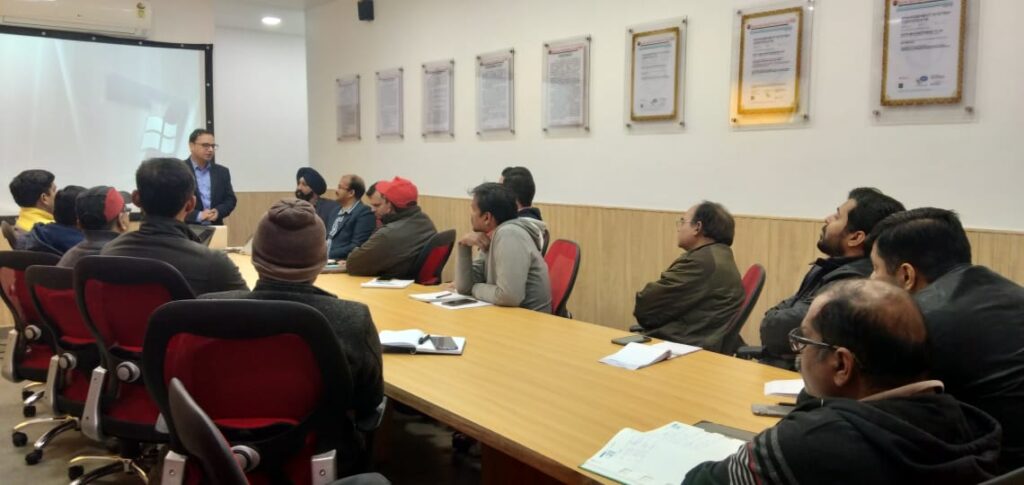Manual & Mechanical Material Handling Training
Proper training for manual and mechanical material handling is essential to ensure worker safety, reduce the risk of injury, and improve efficiency.
Manual & Mechanical Handling Safety Training
Manual & Mechanical Handling Safety Training
Manual and mechanical material handling are essential activities in many industries, including construction, manufacturing, and warehousing. However, these activities come with inherent risks that can lead to injuries and accidents if not managed properly. Proper training for manual and mechanical material handling is essential to ensure worker safety, reduce the risk of injury, and improve efficiency.
Understanding Manual Material Handling
Manual material handling refers to the process of moving, lifting, and transporting objects using human force. It includes activities such as carrying, pushing, pulling, and lifting. Manual material handling tasks can lead to injuries such as strains, sprains, and musculoskeletal disorders if not performed correctly.
Understanding Mechanical Material Handling Training
Mechanical material handling, on the other hand, involves the use of equipment such as forklifts, cranes, and conveyors to move materials. Mechanical material handling tasks can lead to injuries such as crushed fingers, falls, and struck-by accidents if not performed correctly.
The Importance of Manual Material Handling Training
Manual material handling training is vital for workers involved in manual material handling tasks. Here are key reasons why manual material handling training is important:
1. Injury Prevention
Manual material handling tasks can put workers at risk of various injuries, including strains, sprains, back injuries, and musculoskeletal disorders. Training provides workers with ergonomic principles, lifting techniques, and safe work practices to minimize the risk of injuries. It also emphasizes the use of appropriate personal protective equipment (PPE) to enhance worker safety.
2. Load Capacity & Weight Distribution
Manual material handling training includes instruction on load capacity, weight distribution, and proper lifting techniques. Workers learn how to assess loads, determine the weight of materials, and distribute the load to minimize the risk of injury. This knowledge ensures that materials are handled safely and reduces the risk of accidents and damage.
3. Hazard Recognition & Risk Assessment
Training helps workers recognize potential hazards associated with manual material handling, such as unstable loads, overhead obstructions, and slippery surfaces. They learn how to conduct risk assessments, identify control measures, and make informed decisions to mitigate risks. This proactive approach reduces the likelihood of accidents and improves overall safety.
4. Safe Work Practices
Manual material handling training educates workers on the proper methods of handling materials to prevent incidents, such as falling objects or collapsed stacks. They learn about load stability, weight distribution, and the use of securing devices. This knowledge ensures that materials are handled safely and reduces the risk of accidents and damage.
The Importance of Mechanical Material Handling
Mechanical material handling training is vital for workers involved in mechanical material handling tasks. Here are key reasons why mechanical material handling training is important:
1. Equipment Operation & Maintenance
Mechanical material handling training includes instruction on the proper operation, maintenance, and inspection of equipment used in mechanical material handling activities. This ensures that workers understand equipment limitations, load capacities, and safety features. By using equipment correctly, workers can prevent accidents and prolong the lifespan of machinery.
2. Load Capacity & Weight Distribution
Mechanical material handling training provides workers with an understanding of load capacity and weight distribution when using equipment such as forklifts and cranes. They learn how to assess loads, determine the weight of materials, and distribute the load to minimize the risk of injury. This knowledge ensures that materials are handled safely and reduces the risk of accidents and damage.
3. Hazard Recognition & Risk Assessment
Training helps workers recognize potential hazards associated with mechanical material handling, such as overhead obstructions, uneven surfaces, and unstable loads. They learn how to conduct risk assessments, identify.
4. Communication & Coordination
Mechanical material handling often involves coordination between equipment operators, riggers, and other personnel. Training workers in effective communication, using standardized signals, and following established protocols ensures smooth.
Conclusion
Manual and mechanical material handling are essential for all industries, including construction, manufacturing, and warehousing.
EHS CIRCLE INDIA is the Top Safety Consultant or consultancy in Delhi, NCR & India who provides Manual & Mechanical Material Handling Safety training through competent trainers in Pan India.
Contact us for further enquiry

